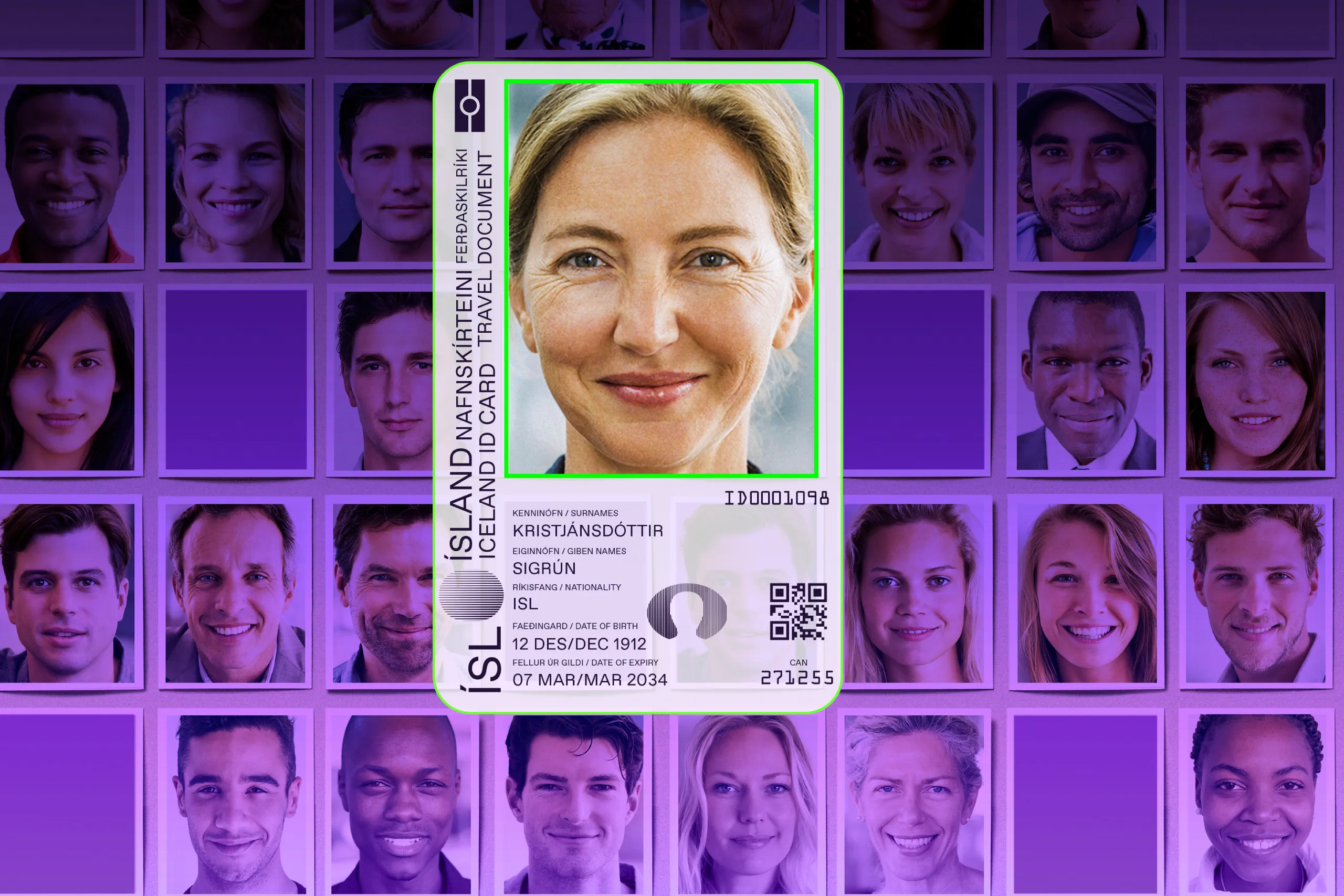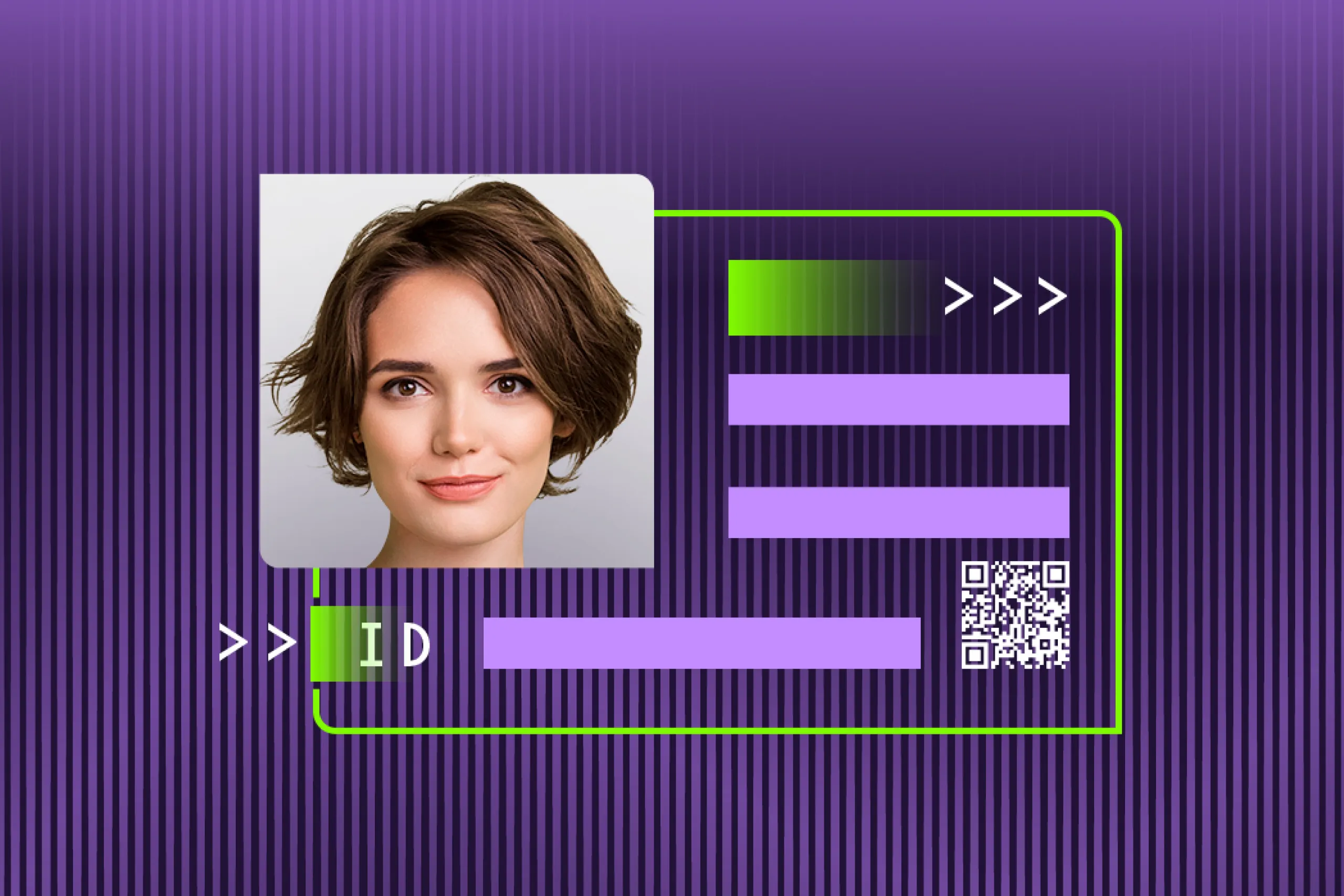At first glance, the identity documents issued by this Nordic country look quite European and strictly ICAO-compliant regarding their appearance, layout, and contents. However, there are a plethora of peculiarities that emerge when looking closely at Danish IDs.
The challenges of processing Danish IDs
The official name of the country is the Kingdom of Denmark. In addition to a metropolitan part comprising a peninsula and several islands, it includes two autonomous territories—Greenland and the Faroe Islands.
This fact makes Denmark a particularly interesting case of ID document processing. Let’s delve into the details.
Three passport versions for different nationals
Both autonomous territories of the Kingdom have their own authorities, including separate prime ministers. They also have official languages distinct from Danish, their own national symbols, and different ethnicities. All of this is evident in the identity documents—primarily passports—issued for citizens living in different parts of the country.
A regular Danish passport is biometric and has three legitimate forms:
The Danish version has a burgundy cover, in accordance with the recommendations for passports of the European Communities’ member states, bearing the words “DEN EUROPÆISKE UNION DANMARK” (“The European Union Denmark”).
The Greenlandic version has a similar yet darker colored cover, containing the inscription of the land’s name in the Greenlandic language—KALAALLIT NUNAAT.
The Faroe version has a green cover and the inscription “FØROYAR,” identifying the land’s name in the Faroese language. The Danish word “Pas” is also duplicated in the official language of the territory.

The passports of Denmark, Greenland, and the Faroe Islands vary in cover color and contain different inscriptions identifying where the document’s holder lives.
Although all three passport versions share the same inner page layout and design, there are still some differences.
All nationals residing in these territories are Danish citizens. However, you may see double nationality in a Faroe passport: Dansk/Danskur/Danish-Færøsk/Føroyskur/Faroese.

The data page in the passports of all three nationalities residing in the Kingdom of Denmark has the same design, layout and security features. The major differences occur in the text above the holder’s photo, the nationality field, and the personal number field. For instance, the personal number field is empty in the travel document of Faroe Islanders.
Greenland residents can choose between the Danish-EU passport or the sub-national Danish-Greenlandic passport. Both document versions have the same information in the nationality field: Dansk/Danish/Danoise.

The Danish passport (above) and the Greenlandic passport (below) have the same inscription in the nationality field.
Regarding the languages used in the document, Danish, English, and French are main languages, while Greenlandic and Faroese are additional languages for the passports of the autonomous territories.
Since the Danish and Faroese language includes some specific characters and diacritic symbols, there are rules for converting them into Latin characters in the machine-readable zone (MRZ). This is something your identity verification solution should be able to handle.
For example, the surname Østergård is written as OESTERGAARD in the MRZ, where Ø becomes OE and å is converted to AA.

Special characters from the Danish alphabet are converted into Latin characters in the machine-readable zone of the passport.
The MRZ code also includes the holder’s civil registration number; however, a Faroe Islands passport doesn’t have one.

Since a Faroe passport has no personal number, its place in the MRZ code is filled with placeholders (<).
Additionally, all three passports contain a height text field.
There are also some dynamic security features that can be checked during online passport liveness detection. For instance, there is a beautiful hologram on the holder’s main portrait.

The presence of a hologram on the holder’s photo in a Danish passport can be checked online during liveness detection.
A variety of driver’s licenses
The concept of different IDs for the metropolitan area and the autonomous territories also applies to driver’s licenses. However, since these documents are issued by local authorities, they are much more varied compared to passports.
As they are domestic IDs, all driver’s licenses include information in only one language (the main language for the territory). This means there are Danish-only, Greenlandic-only, and Faroese-only documents. They have a similar layout with number fields instead of text fields.
The driver’s license comprises standard data such as the holder’s name and photograph, date and place of birth, issuance and expiry dates, and information about the vehicle categories the holder is entitled to drive. Additionally, it includes a personal number (4d) with the holder’s date of birth, which can be checked during online identity verification.

Danish driver’s licenses have numbers instead of text in the data fields. This version from 2017 remains valid.
The Danish driver’s license was updated this year, so there are currently two versions of the document in circulation. The newer series has different background patterns and upgraded security features.

The Danish driver’s license was redesigned after some security updates in 2024.
The Danish driver’s license has a 15-year validity period. Documents issued by Greenlandic and Faroese authorities remain valid for longer. In all cases, the document expires when the holder turns 70 years old. For this reason, there are driver’s licenses with a validity period of 20 years or more.
However, the main difference between these documents is their distinctive designs. Also, Faroese driver’s licenses have no personal number.

Driver’s licenses from the autonomous Danish territories have a layout similar to the Danish version of the document, but they have a different design.
Additionally, the Faroese license was recently updated. The old "pink" versions will remain valid until 2033, according to the Faroese road vehicle inspection service, Akstovan.
Local forms of identification in the country
Denmark, along with Ireland, where only passport cards (a passport in card format available only to Irish passport holders) are issued, is one of the last EU countries that don’t yet have a national identity card in the usual sense. However, there are other specific identification documents used domestically. The legitimationskort (Danish for “identification card” in English) is one of them.
This document, which has been issued since 2017 by Danish municipalities, can be used as a local proof of identity. It includes the holder’s photograph, name, social security number, expiry date, and other information.
Since a legitimationskort doesn't indicate citizenship status, it can’t be considered as a Danish ID card, and can’t be used as a travel document. Typically, this form of identity is available to residents in a specific municipality (“kommune” in Danish).
The peculiarity of this Danish ID is that it can be issued to citizens who are at least 15 years old, and who don’t have a passport or driver’s license. The legitimationskort replaced the youth cards that young people used to use as proof that they were over 16 years old if they wanted to buy age-restricted goods such as tobacco or beer. For this reason, a new slang term appeared in Danish to describe this type of identification document—drukkort (which, in English, can be translated to “drinking card”).
The youth card project wasn’t successful, since only 4,000 of the planned 100,000 cards were issued, according to the Danish Ministry of Health.
The legitimationskort is now issued by 98 municipalities of Denmark. The card has various designs, depending on the issuing body. Some of them have security features such as a hologram or a QR code that helps to check whether the card is valid.

Source: Herning kommune; www.herning.dk.
Some municipalities also offer a so-called pensioner's certificate. These cards can be issued to senior citizens entitled to an early pension (typically, under 65 years old). The documents don’t have the holder’s photo, and can be used for limited identification cases. For instance, retired individuals with pensioner’s certificates can get a discount at museums, amusement parks, and other public places.
One of the forms of a pensioner’s certificate is a DSB identification card associated with Danske Statsbaner (the state railway operator). This Danish ID can be used by retired individuals who want to buy cheaper tickets.
Greenland and the Faroe Islands have no such forms of identification. However, Faroe residents can get a digital identity card called Samleikin to access public services and banks within the region.
Health insurance cards as multi-purpose ID documents
Another domestic identity document that Danish citizens use frequently is the yellow health insurance card (Sundhedskort in Danish). This Danish ID is issued when an individual registers with a personal ID number (CPR number) as a resident of the Kingdom of Denmark entitled to the services offered under the national health insurance program. This yellow card enables an individual to receive medical treatment in Denmark, Greenland, and the Faroe Islands.

Danish citizens can use their health insurance cards in a plethora of situations where identification is required.
The card includes the holder’s name, civil registration number, and address, as well as the name, address, and telephone number of a general practitioner the holder can reach out to in case of any health issues.
In addition to situations associated with medical services, this document can also be used as a proof of identity at libraries, post offices, stores, municipal agencies, and even for travel within the Kingdom of Denmark. For instance, this is one of the valid forms of identification for Air Greenland passengers.
For this reason, this Danish ID is often presented online during identity verification. To verify the document, the IDV software checks personal details and matches this information with the data embedded in the 1D barcode on the front side.
How to effectively process Danish IDs
As a member of the EU, Denmark issues travel identity documents compliant with the current standards. However, your IDV software must be familiar with all three versions of Danish passports.
Additionally, in online scenarios, the software should be able to detect ID liveness, validate the dynamic security features (such as OVI or holograms) to simultaneously determine their presence and authenticity, read barcodes, and cross-validate the details on the data page.
Regula Document Reader SDK, backed by a large ID document template database of over 16,000 templates, can easily manage these tasks. Book a call with one of our representatives to get more information.





